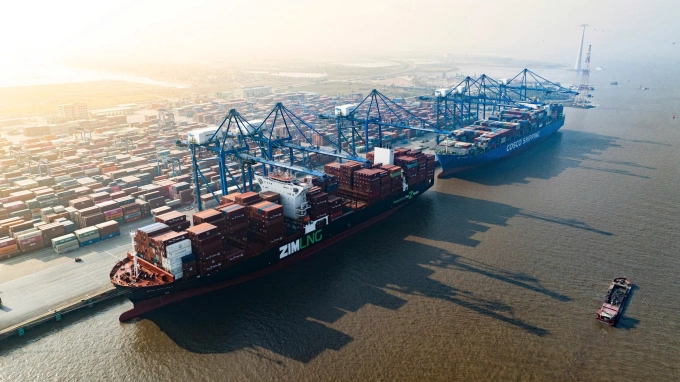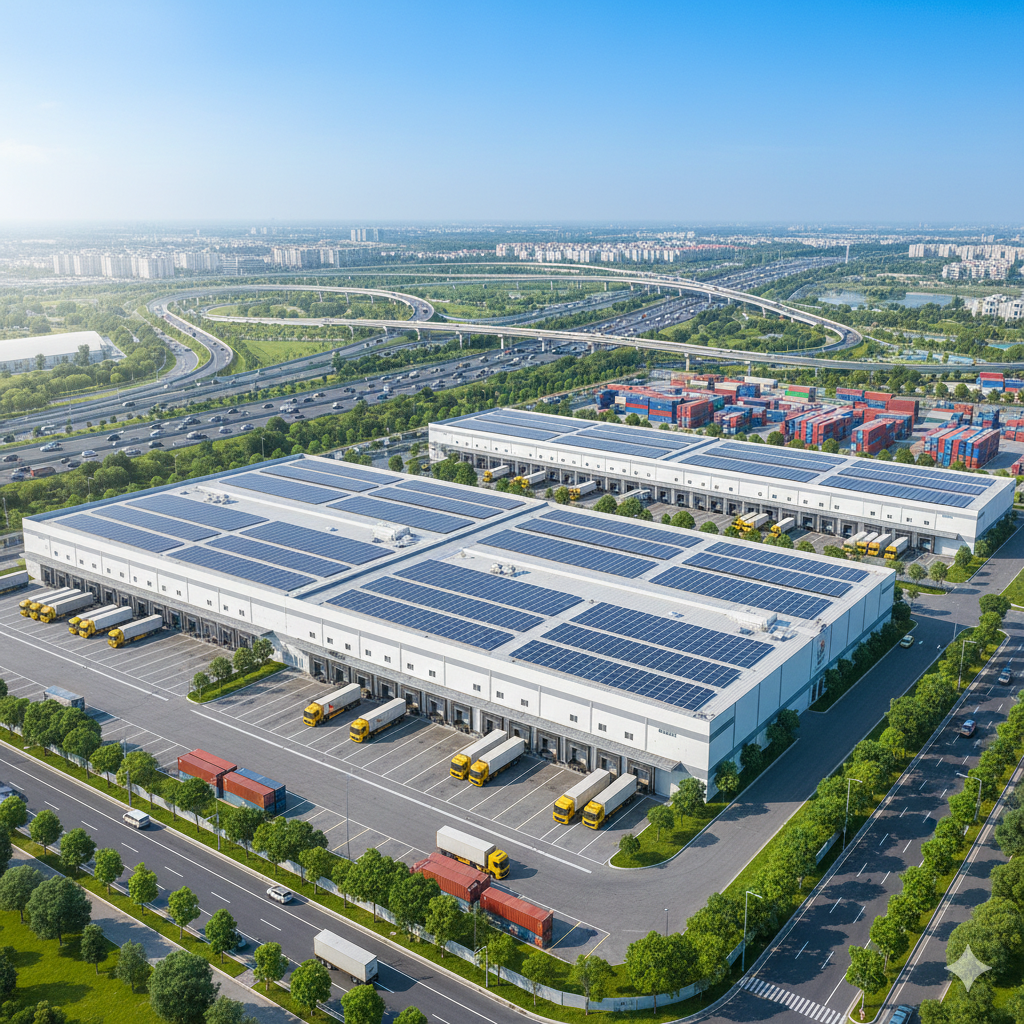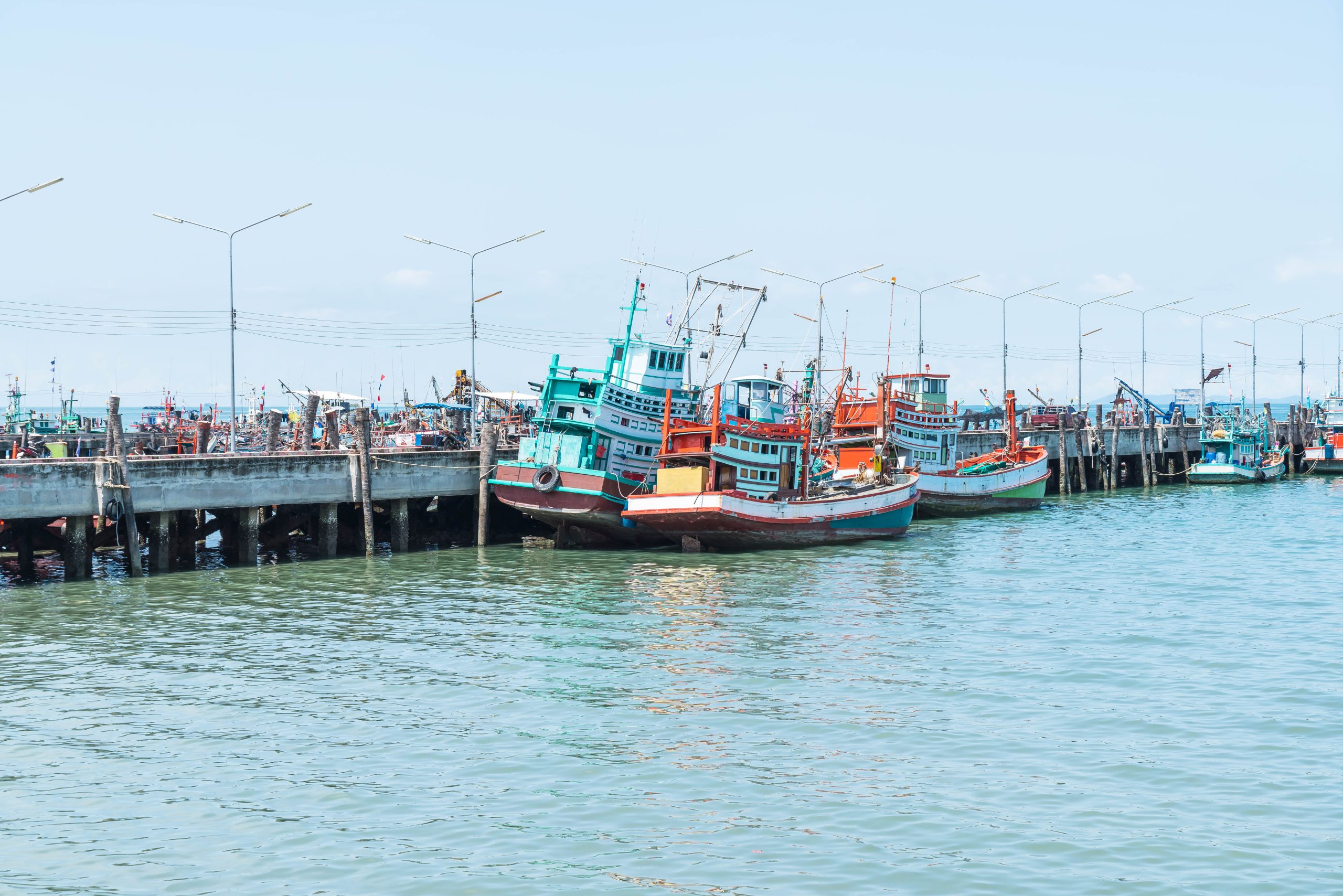Lach Huyen Port Cluster, early 2025. Photo by Le Tan
Vietnam is taking bold steps to become Southeast Asia’s leading logistics hub, driven by the recently approved National Logistics Development Strategy for 2025–2035, with a vision to 2050. The plan aims to turn logistics into a high-value, technology-driven, and sustainable sector, playing a key role in regional supply chains and global trade.

Building a logistics powerhouse
Under this long-term vision, Vietnam targets the development of 5–10 world-class logistics centers to anchor regional networks and ease cross-border trade. By 2050, the country aims to reduce logistics costs to 10–12% of GDP and rank among the top 30 nations in the World Bank’s Logistics Performance Index (LPI).
These goals go beyond cost savings. They focus on efficiency, competitiveness, and value creation within the Vietnam logistics ecosystem.
Infrastructure as the backbone
The government prioritizes synchronized investment across transport modes — road, rail, sea, inland waterways, and air. It also promotes the development of smart warehouses, bonded zones, and free trade areas.
Meanwhile, key logistics regions such as the Red River Delta, Central Vietnam, and the Southeast region (including Hanoi, Hai Phong, Da Nang, and Ho Chi Minh City) will serve as national logistics hubs. These areas will connect industrial parks with global gateways.
Located along major economic corridors, these hubs will form the core of Vietnam’s logistics infrastructure, ensuring faster and more efficient cargo movement across ASEAN and beyond.
Fostering 4PL and 5PL services
A major highlight of Vietnam’s logistics strategy is the push for integrated logistics models, especially 4PL and 5PL services. The government wants to develop Vietnam logistics enterprises capable of offering end-to-end supply chain solutions that combine transport, warehousing, inventory management, and data analytics.
Moreover, Vietnamese logistics providers are encouraged to expand overseas, opening international offices and representative branches. This move will strengthen Vietnam’s logistics competitiveness and boost its visibility in global supply chains.
Digital transformation and innovation
Digitalization lies at the core of Vietnam’s logistics transformation. The government plans to create a national logistics data platform that connects stakeholders across seaports, airports, warehouses, and last-mile delivery.
Furthermore, technologies such as AI, IoT, Big Data, and automation will be embedded in supply chain operations. These tools will improve forecasting, enhance real-time tracking, and optimize resource allocation.
As a result, digital initiatives will cut energy use, streamline routes, and boost operational visibility. Predictive analytics and smart warehouse systems will also help businesses react quickly to market changes.
In addition, the establishment of R&D and innovation centers will connect logistics firms, universities, and startups — driving smart logistics solutions and enhancing digital capacity. Therefore, Vietnam is positioning itself as a regional leader in digital logistics, ready to compete globally.
A growing logistics market with global potential

Lach Huyen Port Cluster, early 2025. Photo by Le Tan
According to the Ministry of Industry and Trade, Vietnam saw more than 6,500 new logistics enterprises in 2024, employing nearly 30,000 workers. The country now offers over 4 million m² of warehouse space and ranks third in ASEAN for port capacity.
A report by IMARC Group valued Vietnam’s logistics market at USD 30 billion in 2024, with projections reaching USD 40 billion in 2025. Growth is fueled by export manufacturing, e-commerce, and digital infrastructure improvements.
Globally, Vietnam ranks among the top 10 emerging logistics markets, scoring highly in international logistics opportunities and infrastructure development.
The distribution heart of Southeast Asia
With its strategic location at the crossroads of major trade routes, Vietnam is perfectly positioned to become the “distribution heart” of Southeast Asia. Continuous infrastructure upgrades, open investment policies, and digital innovation are reshaping the nation’s logistics landscape.
As multinational logistics corporations expand their presence, Vietnam’s role in regional supply chains continues to grow — offering efficiency, connectivity, and sustainability.
In short, Vietnam is not just catching up — it is racing ahead to redefine logistics in Southeast Asia.
Source: Vnexpress
24/10/2025
 info@mplogistics.vn
info@mplogistics.vn (+84) 28 3811 9033
(+84) 28 3811 9033




 VN
VN